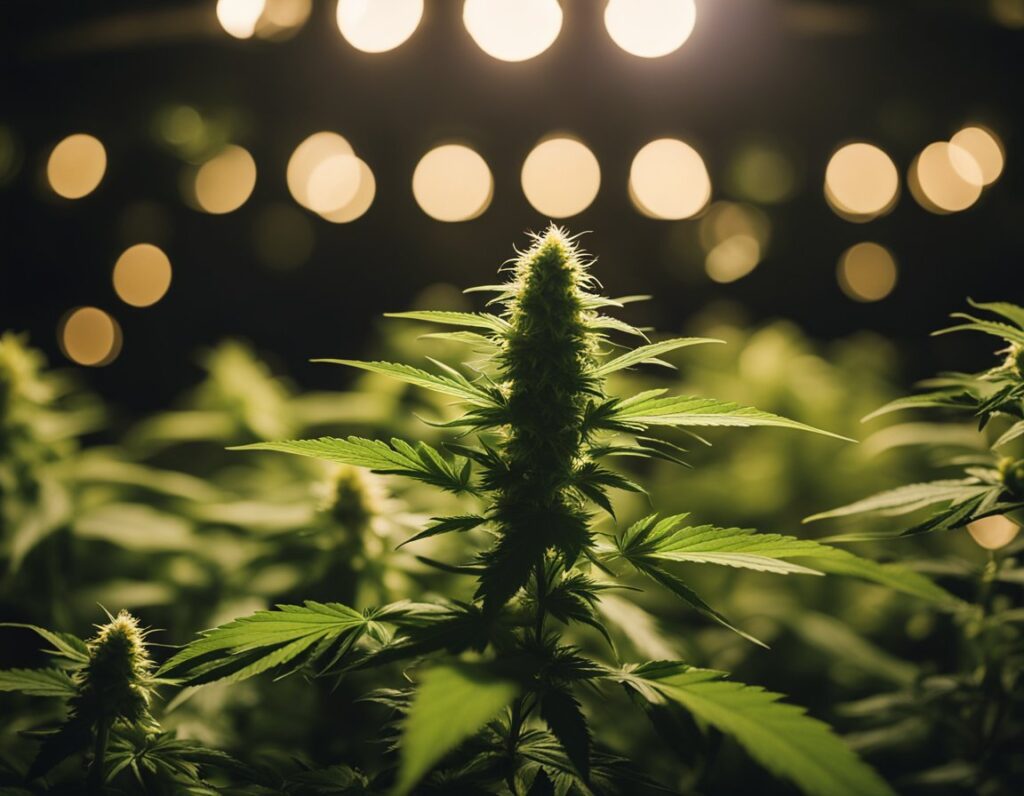
Selecting the top grow lights for indoor cannabis cultivation in Vancouver, along with high-quality marijuana seeds Vancouver, can significantly impact plant health and yield. Understanding how these lights support photosynthesis, a crucial growth process, ensures you’re providing optimal conditions for robust development. Cannabis plants need specific light spectrums and intensities for each growth stage, and choosing the best options available in Vancouver will help your plants thrive.
Photosynthesis is the process by which plants convert light into energy. It plays a crucial role in the growth cycle of cannabis. During this process, cannabis plants utilize light to synthesize food from carbon dioxide and water.
This energy production supports leaf growth, flowering, and overall plant health. Without adequate light, your plants may not achieve their full potential, leading to lower yields.
To facilitate effective photosynthesis, choose grow lights that mimic natural sunlight. This helps maintain the optimal energy conversion rates necessary for robust plant development.
The light spectrum significantly impacts cannabis growth stages. Cannabis plants thrive on different spectrums during their growth cycle. In the vegetative stage, they benefit from blue light (400-500 nm), which enhances leaf development and promotes strong, healthy stems.
During the flowering stage, red light (600-700 nm) is more beneficial, aiding in bud production. It’s key to use a grow light that covers both spectrums for a full lifecycle.
Light intensity is equally important. You should measure this in photosynthetic photon flux density (PPFD), which indicates the amount of light reaching your plants. It’s essential to provide adequate PPFD levels to avoid stunted growth or light burn. For cannabis, optimal intensity typically ranges from 400 to 600 µmol/m²/s, depending on the growth stage.
Using a combination of these insights can lead to healthier, more productive cannabis plants.
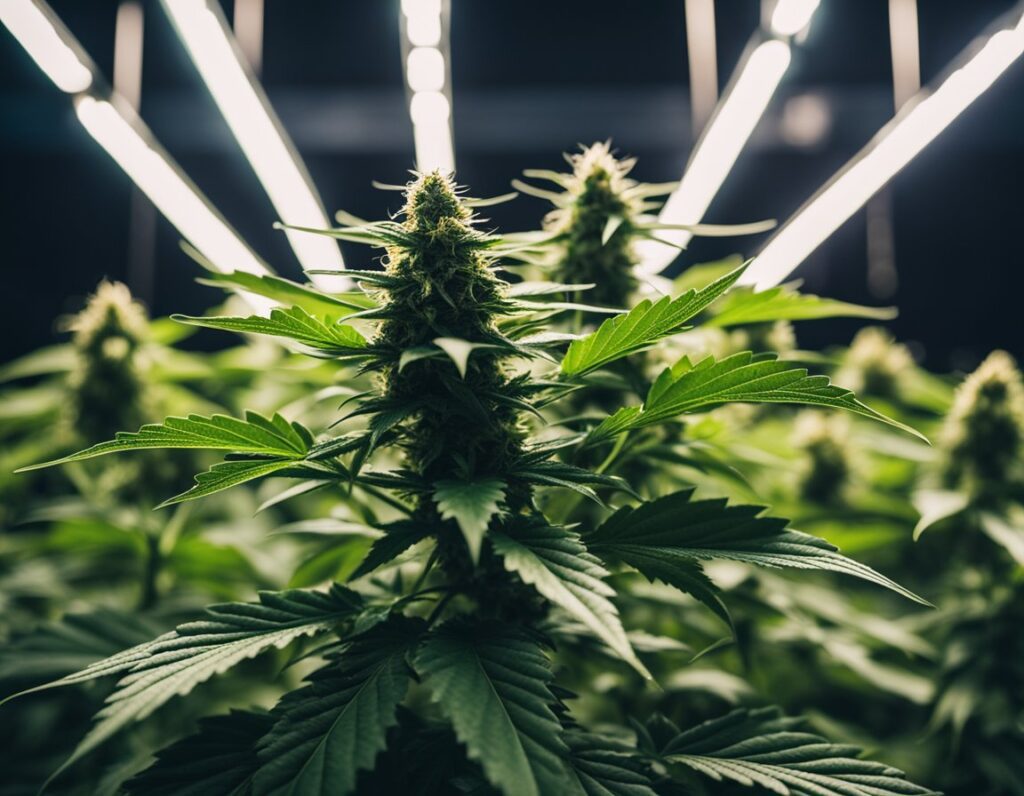
Indoor cannabis cultivation in Vancouver requires careful selection of grow lights to optimize plant growth. Choosing the best grow lights Vancouver has to offer provides unique benefits in energy efficiency, growth rate, and overall plant health. Different types of lighting systems offer various advantages and drawbacks, allowing you to select the best fit for each growth stage.
LED Grow Lights:
High-Pressure Sodium (HPS):
Fluorescent Lights:
High-Intensity Discharge (HID) lights, including Metal Halide (MH) and HPS, are powerful options for cannabis cultivation.
Pros:
Cons:
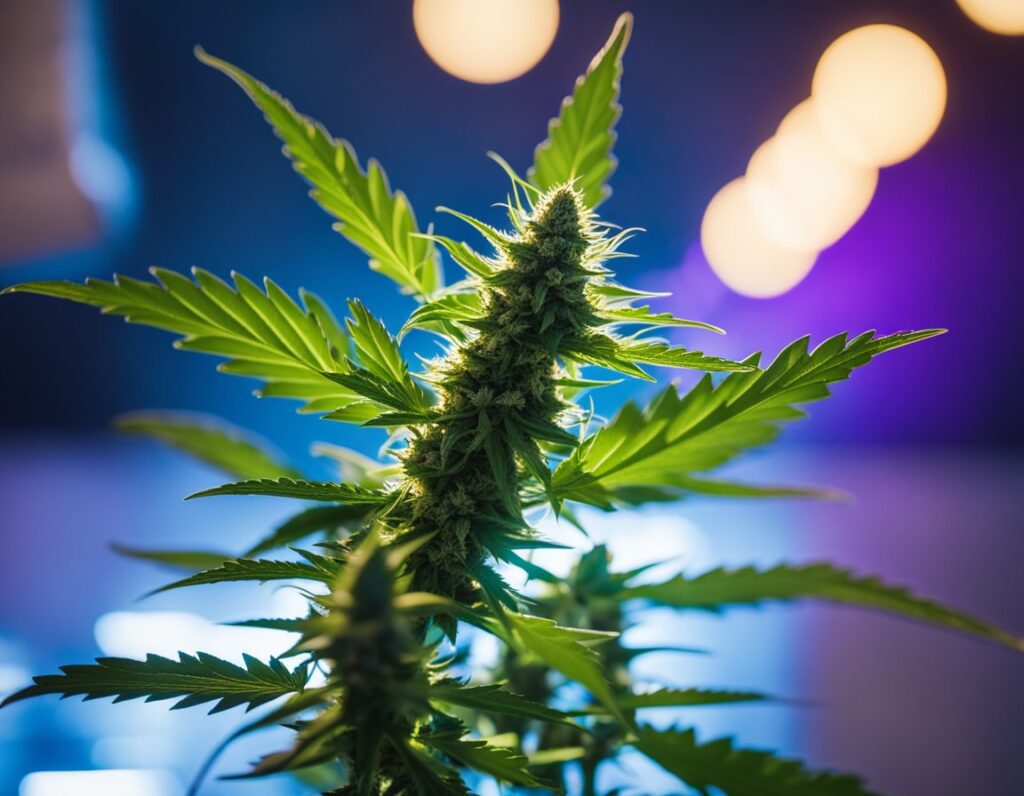
Understanding the specific light needs during the different stages of cannabis growth is crucial for maximizing yield and plant health. Adjusting both the light cycles and the spectrum can significantly impact your plants’ development from the vegetative phase to flowering.
During the vegetative stage, cannabis plants require a light cycle of 18 hours on and 6 hours off (18/6) to encourage strong growth. Some growers opt for a 24-hour light cycle (24/0) for even faster development.
The spectrum of light during this stage should emphasize blue light (400-500 nm), which promotes leaf growth and overall vigor. Utilizing full-spectrum lights or LED setups that emphasize blue wavelengths can be advantageous.
A table for quick reference:
| Light Type | Main Spectrum | Efficiency |
|---|---|---|
| LEDs | Blue | High |
| CMH | Full Spectrum | Moderate |
| Metal Halide | Blue | High |
Ensuring that you maintain the right conditions of humidity and temperature alongside appropriate lighting will lead to healthier plants ready for the next stage.
As your plants transition to the flowering stage, adjust the light cycle to 12 hours on and 12 hours off (12/12). This change signals to the plants that it is time to produce buds.
During flowering, the spectrum should shift to include more red light (600-700 nm). Red wavelengths encourage bud formation and increase resin production, essential for a quality harvest. Full-spectrum lights that can either focus on red or adjust between red and blue will meet these needs effectively.
Consider this list for flowering stage lighting options:
By tailoring the light conditions during both growth phases, you can optimize not just yield but also the quality of your cannabis.
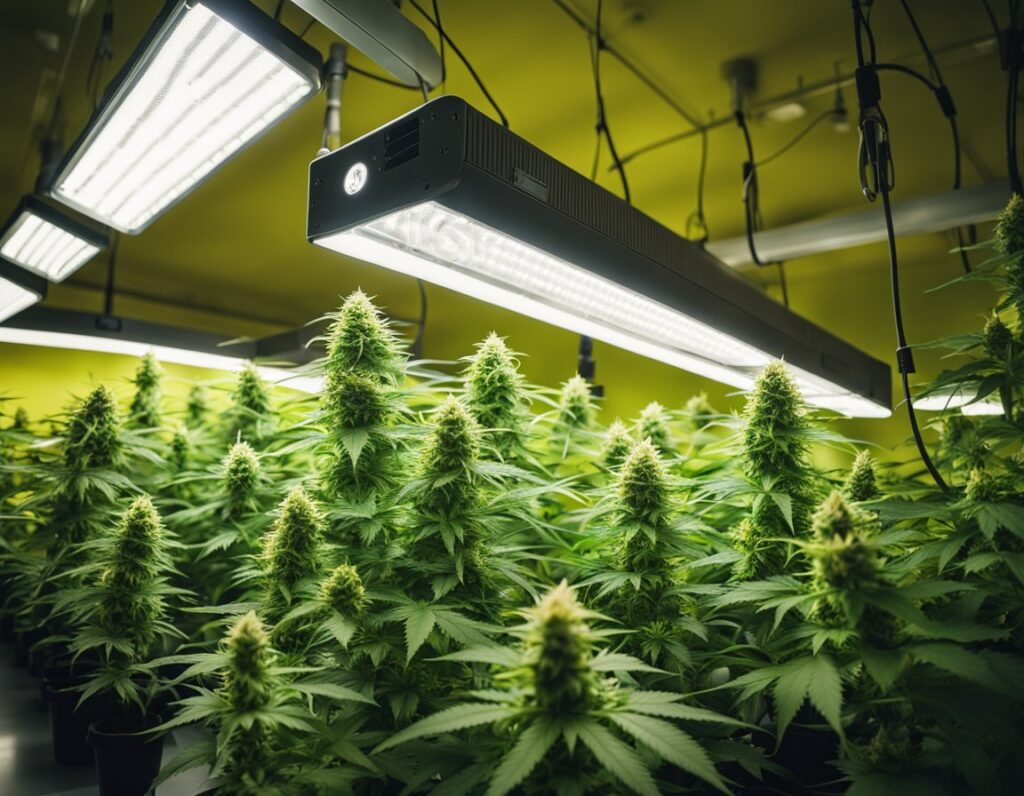
The evolution of grow light technology has significantly impacted indoor cannabis cultivation. Innovations focus on energy efficiency and managing heat output, which are critical to promoting healthy plant growth while minimizing operational costs.
LED lighting has transformed indoor cannabis cultivation by offering superior energy efficiency compared to traditional lighting systems. These lights use a fraction of the electricity yet produce the same or even greater light output.
Key Benefits of LED Technology:
Investing in LED grow lights not only reduces your carbon footprint but also enhances your cultivation efficiency and profitability.
Managing heat output is crucial for successful indoor cannabis cultivation. High temperatures can stress plants and affect their growth negatively.
LED lights generate significantly less heat compared to traditional options such as HPS or MH lights. This reduced heat output allows you to maintain optimal growing conditions without the need for extensive cooling systems.
Considerations for Heat Management:
By choosing energy-efficient LED technology, you not only improve your energy savings but also create a more controlled environment for your plants, leading to healthier and more productive growth.
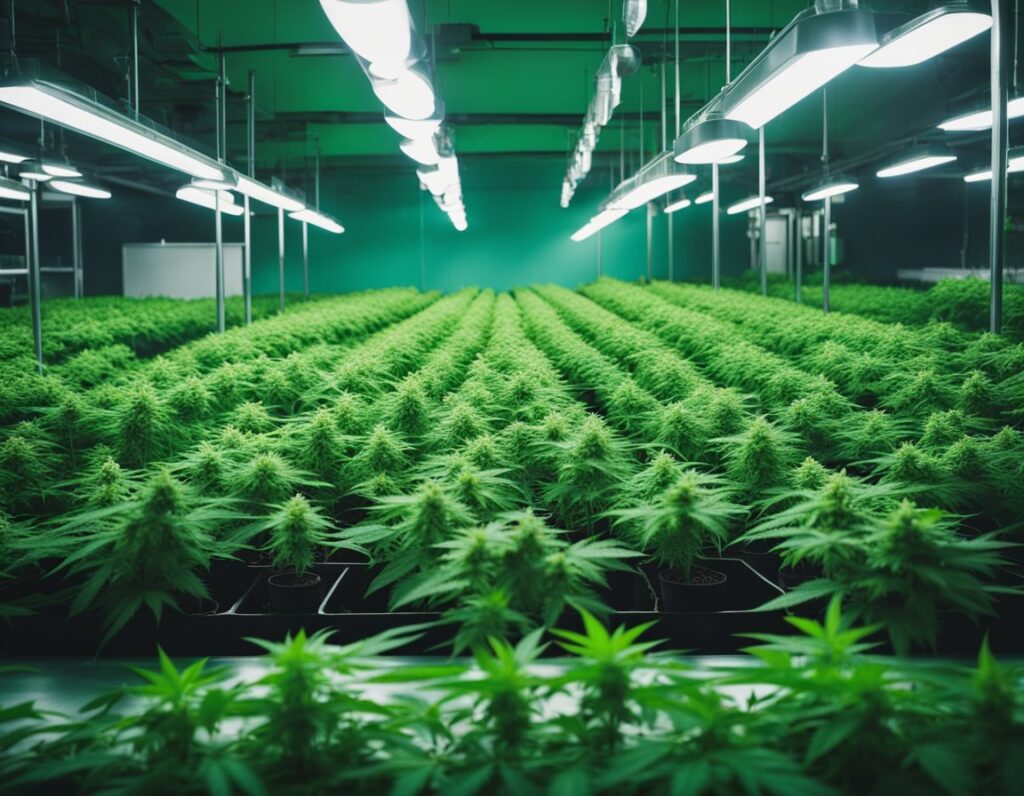
Proper installation and maintenance of grow lights are essential for optimal indoor cannabis cultivation. Key considerations include ensuring adequate ventilation and configuring light positioning effectively within your grow room.
A reliable ventilation system is vital in a grow room. It helps regulate temperature, humidity, and air flow, all critical factors for healthy plant growth.
Types of Ventilation: Use a combination of passive and active ventilation methods. Passive ventilation can involve vents or windows, while exhaust fans provide active air exchange.
Airflow Planning: Position your fans strategically to promote even air distribution. Ensure cool, fresh air enters from the bottom while warmer air is expelled from the top.
Filter Installation: Implement carbon filters to control odors effectively. This is especially important during flowering stages when odor production increases.
Temperature and Humidity Control: Monitor these parameters regularly. Ideal temperatures range from 68°F to 77°F during the light cycle and slightly cooler during dark periods. Maintain humidity levels between 40% and 60% to prevent mold and mildew.
By ensuring a well-functioning ventilation system, you can significantly enhance the efficiency of your grow lights and promote robust plant development.
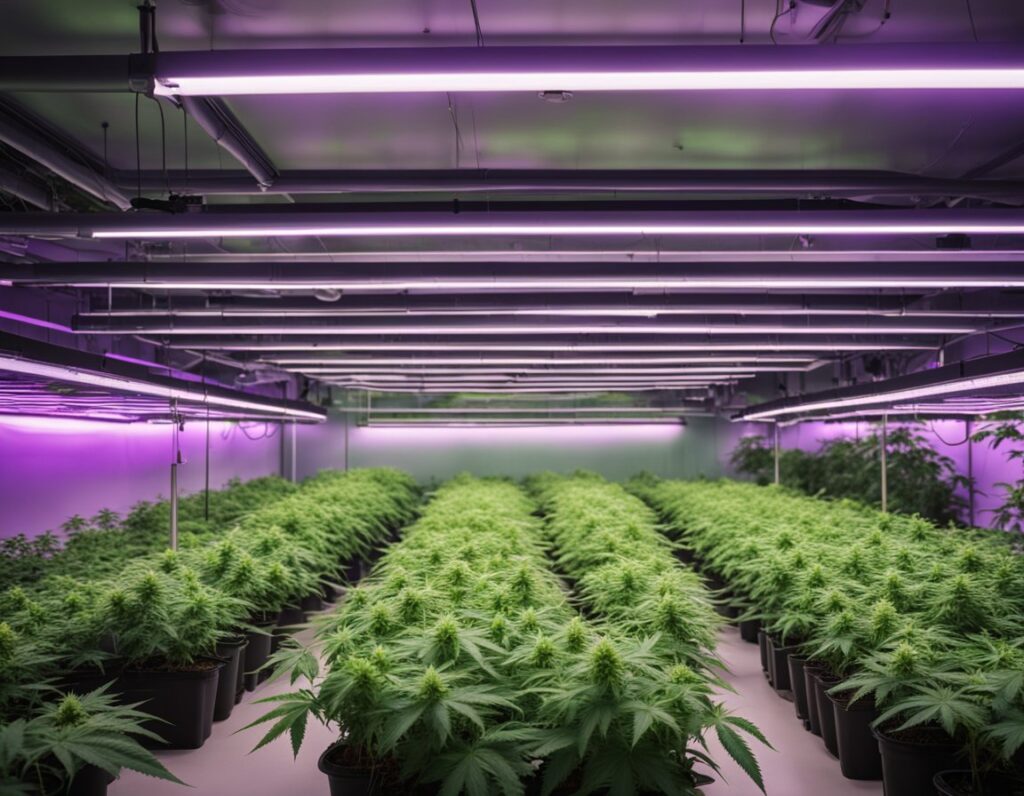
Creating the right environment is essential for robust growth and potent buds. Focus on key factors such as lighting, ventilation, and CO2 levels.
Lighting: Aim for a Photosynthetic Photon Flux Density (PPFD) between 400-600 μmol/m²/s during the flowering stage. Utilize high-quality grow lights like HID or LED, which replicate natural sunlight and enhance growth cycles.
Ventilation: Good airflow is critical to prevent heat buildup and control humidity. Incorporate exhaust fans and carbon filters. This will help reduce the risk of pest infestations and maintain air quality.
CO2 Levels: Maintaining CO2 levels around 1000-1500 ppm can significantly boost yields. You can introduce CO2 with tanks or through natural processes like fermentation.
Temperature and Humidity: Keep the temperature between 70-85°F (20-29°C) during the day. Relative humidity should be around 40-60% during flowering to prevent mold. Consider using dehumidifiers or humidifiers as needed.
Watering and Nutrients: Ensure proper watering practices based on your plant’s stage. Use high-quality nutrients tailored for your specific strains, especially Indica varieties, known for their dense buds.
For growers in Vancouver seeking to maximize their yields and achieve optimal plant health, selecting the top grow lights for indoor cannabis cultivation in Vancouver is a crucial step. By choosing the right lighting systems, you can create the ideal conditions to support each growth stage, enhance bud development, and maintain a controlled, energy-efficient environment that minimizes operational costs.
Understanding grow lights is essential for successful indoor cannabis cultivation. This section addresses key queries related to full-spectrum options, critical features, lumens and light spectrum, benefits of LED technology, where to purchase, and light cycles.
Some of the top full-spectrum LED grow lights in Canada include brands recognized for their efficiency and effectiveness in promoting cannabis growth. Look for options with adjustable spectrums and high energy efficiency ratings. Popular choices often come with good warranties and user-friendly features tailored for indoor setups.
When reviewing grow lights, prioritize features such as light intensity, energy consumption, and spectrums offered. Assess the coverage area and cooling systems to prevent overheating. Reviews should mention durability and build quality, as these factors often impact performance over time.
Lumens measure light output and are vital for plant growth. Cannabis plants typically require around 300-600 μmol/m²/s of PAR (Photosynthetically Active Radiation) during the vegetative stage and 600-900 μmol/m²/s during flowering. A balanced light spectrum that includes blue and red wavelengths supports photosynthesis and overall growth.
LED grow lights offer several advantages, including energy efficiency, longer lifespan, and lower heat output. They emit a full spectrum of light, which can enhance growth stages more effectively than traditional lights. Additionally, LEDs allow for close placement to plants without risk of burning.
For beginners, a recommended light cycle is 18 hours on and 6 hours off during the vegetative stage. When transitioning to flowering, change the cycle to 12 hours on and 12 hours off. This change signals the plants to enter the blooming phase, promoting healthier yields.
We ship and deliver world wide via USPS and various couriers.
We offer a wide range of secure and anonymous online payment options.
We care about you, our customer. Please contact us with any questions or concerns.
Find out more about the benefits of being a loyal and regular customer.
WE ARE EVERY GROWERS ONE STOP SHOP TO ACQUIRE PREMIUM CANNABIS SEEDS FOR SALE IN THE USA, CANADA AND AUSTRALIA

Farmers Lab Seeds 2024, | All Right Reserved
Seeds are sold as novelty items, souvenirs, and collectibles. They contain 0% THC. We encourage our customers to check the legislation in their Country, State, Province, and Municipality prior to purchasing items from our store. We do not provide growing information.
All seeds are sold as hemp, and lab tested under 0.3% THC. This product is not for use by or sale to persons under the age of 21. This product should be used only as directed on the label. It should not be used if you are pregnant or nursing. Consult with a physician before use if you have a serious medical condition or use prescription medications. A Doctor’s advice should be sought before using this and any supplemental dietary product. All trademarks and copyrights are property of their respective owners and are not affiliated with nor do they endorse this product.
These statements have not been evaluated by the FDA. This product is not intended to diagnose, treat, cure or prevent any disease. Individual weight loss results will vary. By using this site, you agree to follow the Privacy Policy and all Terms & Conditions printed on this site. Void Where Prohibited by Law.